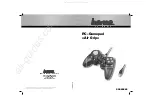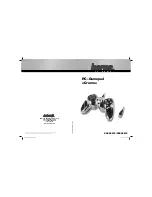
FEATURES & SPECIFICATIONS
HeatNet Control V3
Page 7
Features & Specifications
HeatNet Version 3.x Discontinued
Features
1.
With this hardware release the service power, switched
power, and the power switch connector have been
removed. These were available on prior versions of the
HeatNet control. Upgrading to this control from prior
versions will require some wiring changes using an
upgrade kit.
2. The J10B input is no longer supported for proving the
damper. Damper proving switches will need to be wired
to J12B, 7 & 8.
3. If a stack sensor is used with this version, the alarm
silence switch cannot be connected and the
disconnected wires should be terminated appropriately.
Silencing the alarm can be done by holding the BACK
and SELECT keys down at the same time.
Hardware Version 3.x Control
Additional
Features
(Identified by circuit board color: BLACK)
1.
Support for (2) Circulator pumps (1 if Lite version).
Two rotation modes are provided: Based on system
runtime or system pump runtime hours. Pump failure
switchover/retry mode.
2.
Warm weather shutdown, (2) pump jog (1 if Lite
version) and local pump jog to keep pumps from
seizing.
3.
The Modbus, BACnet or LonWorks communications
port can be accessed concurrently with the USB port
(HeatNet Control Pro). The BACnet, LonWorks, or
Modbus connections do not need to be disabled to use
the USB ports.
4.
The DHW pump and the Local Pump relay connections
now provide a normally closed contact. This allows for
the use of a power open/power close valve.
5.
Support for 5mA 0-10v control signals using third party
controls.
6.
Support for (2) display types: Vacuum Florescent and
Color LCD using the same 20 pin ribbon cable. The
color LCD provides an interface for the HeatNet Online
monitoring.
7.
System Return sensor input.
8.
Enhanced boot loader and firmware storage. One
firmware storage location for user updates. One
firmware program that always remains resident so that a
factory program can be restored. Primary loading is
with a flashdrive. The P3 shunt restores the previous
firmware.
9.
32 bit Microcontroller operating @ 64 Mhz with 5-
stage pipeline, and prefetch cache.
10.
(3) Stage control relay outputs for TBD applications.
11.
Backwards compatible with existing HeatNet versions
1.x and 2.x controls and applications.
12.
Support for 135 Ohm control actuators.
13.
1k Platinum Stack sensor.
14.
Flow meter input or BMS GPM input/control
15.
Dual PID controls. One for space heating and one for
DHW heating. Allows for simultaneous DHW/Space
heating.
Standard Features Overview
1.
Five levels of external control inputs, including
modulation and staging that provide application
flexibility.
2.
Digital Communications Control (analog 4-20mA and
0-10vdc control supported, but not required).
a.
Boiler to Boiler : HeatNet (H-Net)
b.
B
uilding
M
anagement
S
ystem (MODBUS,
Optional BACnet or LonWorks) to Boiler
3.
Distributed control using the HeatNet (H-Net) protocol
for up to 16 boilers. Eliminates the need for “wall
mounted” controls.
4.
Analog Control 4-20mA and 0-10vdc (5mA minimum
current) signals supported.
5.
System/Boiler operating status text display
6.
Interlock, Event, and System logging with a time
stamp.
7.
Advanced PID algorithm optimized for the Futera
III/Fusion-Series boilers.
8.
(4) Dedicated temperature sensor inputs for: Outside
Air Temperature, Supply (Boiler Outlet) Temperature,
Return (Boiler Inlet) Temperature, and Header
(Common System Supply) Temperature.
Summary of Contents for FUTERA XLF Series
Page 27: ...CONTROL METHODS HeatNet Control V3 Page 27 Figure 25 Base loading relay...
Page 67: ...WIRING CONNECTIONS HeatNet Control V3 Page 67 Figure 49 Jumper Dip Switch Locations...
Page 73: ...WIRING CONNECTIONS HeatNet Control V3 Page 73 Figure 57 Temperature sensors...








































